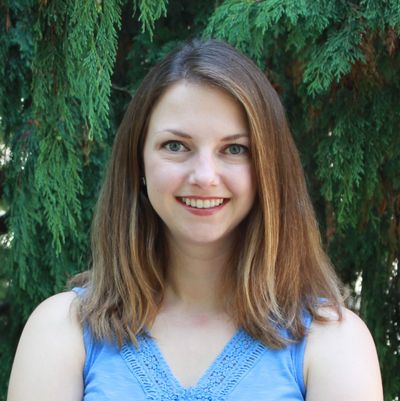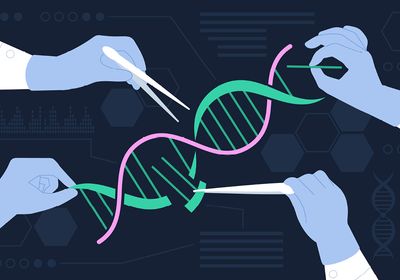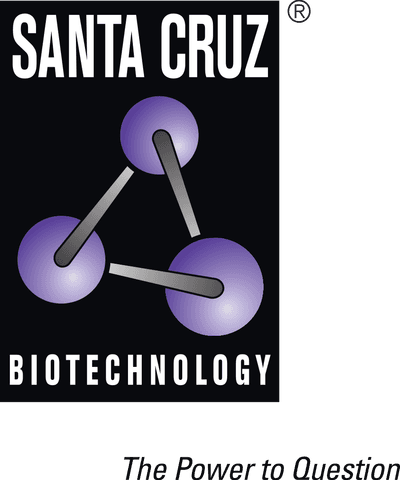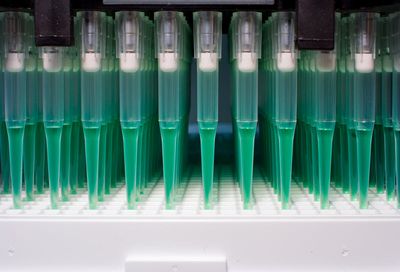ABOVE: By analyzing archival biopsy tissue, researchers gained an in-depth view of human bone marrow. © iStock, omaset
Blood cells must be continuously replenished, and healthy adults can make up to hundreds of billions of new blood cells every day through hematopoiesis.1 During this process, hematopoietic stem cells (HSC) in the bone marrow produce progenitors that replenish the cell pool, forming red blood cells, white blood cells, and platelets.
Within the bone marrow, HSC cluster with other cells and factors required for proper hematopoiesis and HSC maintenance, forming heterogeneous microenvironments or niches. Understanding the properties of different hematopoietic niches is of great interest because perturbations in HSC differentiation, self-renewal, or their spatial arrangement can lead to disease, including cancer.2,3 Animal model studies shed some light on these niches, but because accessing bone marrow tissue in humans is invasive and painful, it was unknown how well the animal data applied to humans, until now. Sanjay Patel, a pathologist at Weill Cornell Medicine, led a team of scientists who combined new tissue staining, imaging, and artificial intelligence (AI)-based image analysis techniques to study human HSC niches at single cell and spatial levels. Their findings, recently reported in Blood, provide a novel view of human bone marrow architecture and open up the possibility of using this imaging technique on other biopsy tissue samples.4

Patel and his team took advantage of archival bone marrow samples biopsied from the hip bones of patients during clinical testing. These one- to two-centimeter-long pieces of tissue are fixed and embedded into wax blocks before scientists apply thin slices onto microscope slides for staining and evaluation. Old biopsy samples are stored in institutions and biobanks for years after they are collected, and they have been an untapped resource because it was difficult to stain and analyze multiple proteins in formalin-fixed, paraffin-embedded tissue sections. Rather than letting them gather dust, Patel explored the biology within these tissues thanks to advances in technology. “I had what I viewed as a unique opportunity to merge knowledge of hematologic tissue, knowledge of spatial biology techniques, and then capitalize on what's a rapidly evolving area of AI-based imaging diagnostics for medical purposes,” said Patel.
See Also "Niche Interactions Lock Down Leukemia Cells"
To understand HSC niches in healthy bone marrow, Patel’s team analyzed samples from 29 individuals of varying ages whose biopsies showed no evidence of disease. The researchers first stained the tissues with six fluorescent antibodies to label immune proteins and determine the constituent cell types. After imaging the entirety of each slide, they employed a machine learning program to analyze multiple layers of visual information, identifying what signals were present pixel by pixel. “They came up with this AI method where they can, in a nonsubjective way, analyze the tissue and cell position within the bone marrow,” said Sandra Pinho, an epigenetics and stem cell biology researcher at the University of Illinois in Chicago, who was not involved in this study.
Thanks to the detailed spatial information that they acquired, Patel’s team found that human stem and progenitor cells in the bone marrow primarily inhabited regions close to bone and blood vessels, which agreed with previous animal studies. “I was very pleasantly surprised to see that our initial discoveries in the mouse bone marrow were reproduced in the human,” said Pinho.
Because he used biopsy samples from individuals of various ages, Patel visualized how the bone marrow changed at the single cell and architectural levels as time went on. Similar to previous animal studies, Patel’s team found that some human bone marrow stem cells also resided near megakaryocytes, the large cells that generate platelets. However, aging seemed to change both the morphological characteristics of these cells and their spatial relationships. Samples from older individuals had larger HSC and smaller megakaryocytes compared to younger ones, and smaller megakaryocytes associated with lower platelet counts. Additionally, there were fewer HSC located near megakaryocytes in older individuals, which suggests a change in the megakaryocyte niche as people age. “Perhaps in older individuals, through these morphologic and spatial changes, that relationship may be less prominent or less active,” said Patel. “We have generated more questions than we have answers.”
See Also "The Promise of Spatial Transcriptomics in Exploring Chronic Liver Disease"
Now that he has data from healthy bone marrow samples, Patel’s next step is to analyze spatial changes in diseased tissue, in particular bone marrow diseases that involve genetic perturbations to HSC such as chronic myelodysplastic syndrome and acute leukemia. “The bone marrow is a melting pot of different diseases and pathology that can occur,” said Patel. “Now there's this opportunity to utilize this specimen type and let your imagination run wild … There are so many different things you could study this way just by modifying the cell types of interest that you are trying to interrogate.”
References
- Fliedner TM, et al. Structure and function of bone marrow hemopoiesis: mechanisms of response to ionizing radiation exposure. Cancer Biother Radiopharm. 2002;17(4):405-426.
- Pinho S, Frenette PS. Haematopoietic stem cell activity and interactions with the niche. Nat Rev Mol Cell Biol. 2019;20(5):303-320.
- Bauer M, et al. Altered spatial composition of the immune cell repertoire in association to CD34+ blasts in myelodysplastic syndromes and secondary acute myeloid leukemia. Cancers. 2021;13(2):186.
- Sarachakov A, et al. Spatial mapping of human hematopoiesis at single cell resolution reveals aging-associated topographic remodeling. Blood. 2023;142(26):2282-2295.







